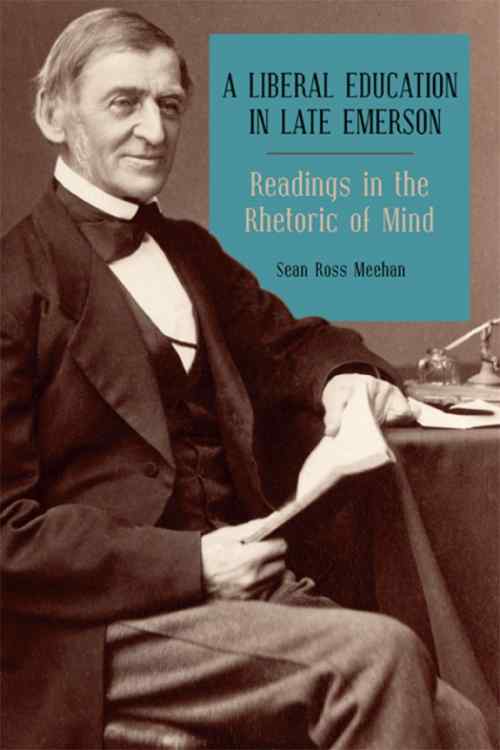The Art of Rhetoric
In a new book on Ralph Waldo Emerson, English Professor Sean Meehan makes the case that today’s debate over the value of a liberal arts education can be well informed by Emerson’s views on the radical transformations happening to higher ed during his time.

The year was 1869, and Charles William Eliot, the new president at Harvard, gave an inaugural address that laid out what would become the foundation for higher education as we know it today. Among his many reforms, Eliot advanced the concept of “spontaneous diversity of choice” so that students could choose their classes rather than be bound by traditional requirements, and that graduate schools specializing in various disciplines would follow an undergraduate degree.
“It's the beginning of the actual university that we know today, a research-based university,” says Sean Meehan, associate professor of English and scholar of Ralph Waldo Emerson, the influential essayist who led the American transcendentalist movement of the mid-1800s that championed individualism. “Up to that point, everything was provided, everyone studied the same curriculum. Eliot used Emerson as an inspiration for electives and the beginnings of majors and departments.”
But Emerson, who graduated Harvard in 1821 and, by the time Eliot was its president was a member of the Board of Overseers, wasn't so sure about this radical change in the concept of what college should be. And in his new book, A Liberal Education in Late Emerson: Readings in the Rhetoric of Mind, published in January by Camden House/Boydell & Brewer, Meehan traces relations between Emerson's educational views and the ideas of some of his most significant readers, including the poet Walt Whitman, the philosopher William James, and W.E.B. Du Bois, a leading public intellectual in the 20th century.
Meehan says that in his later writings, “Emerson remained engaged in educational matters and, more specifically, argued for the value of liberal education even as it was being questioned by calls for a new, more practical education.” Meehan's initial research for the book was more broadly focused on Emerson and education, but more specific parallels began to emerge as the current conversation about the value of liberal education intensified.
Emerson argued “that a truly distinctive college education would stand out most not by rejecting its past but by reclaiming its foundational models anew,” Meehan says. “I think Emerson was right.” Although Emerson doesn't live “to see the full flowering of the university by the end of the century, he's already critiquing where it is heading.” In fact, as Meehan points out, as a generalist scholar Emerson would not have been hired to teach at the new Harvard University, not even in the philosophy department housed in Emerson Hall.
“I think Emerson would find himself more at home today at Washington College than at Harvard University,” Meehan says. “I think Emerson would know that the specialization of the university model, not the liberal education of the college, is what is currently ‘academically adrift,' to cite the title of a recent book critical of higher education.”
Meehan is particularly interested in how the shift to what we now know as departments—“including by the end of the century a discipline called English, which didn't exist”—begins to undo the more general approach to language and learning called rhetoric. “That's the older liberal arts model,” he says, calling it in the book “the rhetorical liberal arts.”
Rhetoric as an overarching way of learning connected all aspects of education, whether in sciences, humanities, or the arts. As it vanished, Meehan says, so did the understanding of “ideas being related across different disciplines.”
To return to this traditional concept of rhetoric and place it in a contemporary context, Meehan developed “The Art of Rhetoric,” a class that uses documentary film and literature to study classical rhetoric. Students study, for example, Central Park Five, using rhetoric to analyze the documentary and to understand social issues shaping the original case. For the final in the course, students compose a documentary project shaped by rhetorical concepts of invention, arrangement, style, memory, and delivery.
Meehan says liberal arts colleges are under so much pressure for university-style innovation, “we're almost embarrassed by old things like rhetoric… But our value remains the fact that we're not so new. We have at our foundation this very old idea of the mind's education.” He points to a favorite line Emerson delivered at Harvard commencement in 1867: “Nothing is old but the mind.”
Taking a model like rhetoric, studying it through the lens of the older Emerson, and then presenting it anew to students grounds and perpetuates its value.
“Maybe that's an older model that some would reject as outdated,” Meehan says, “but it's very much about taking this older model and persuasively renewing it. That's the formula that liberal education shares with rhetoric.”